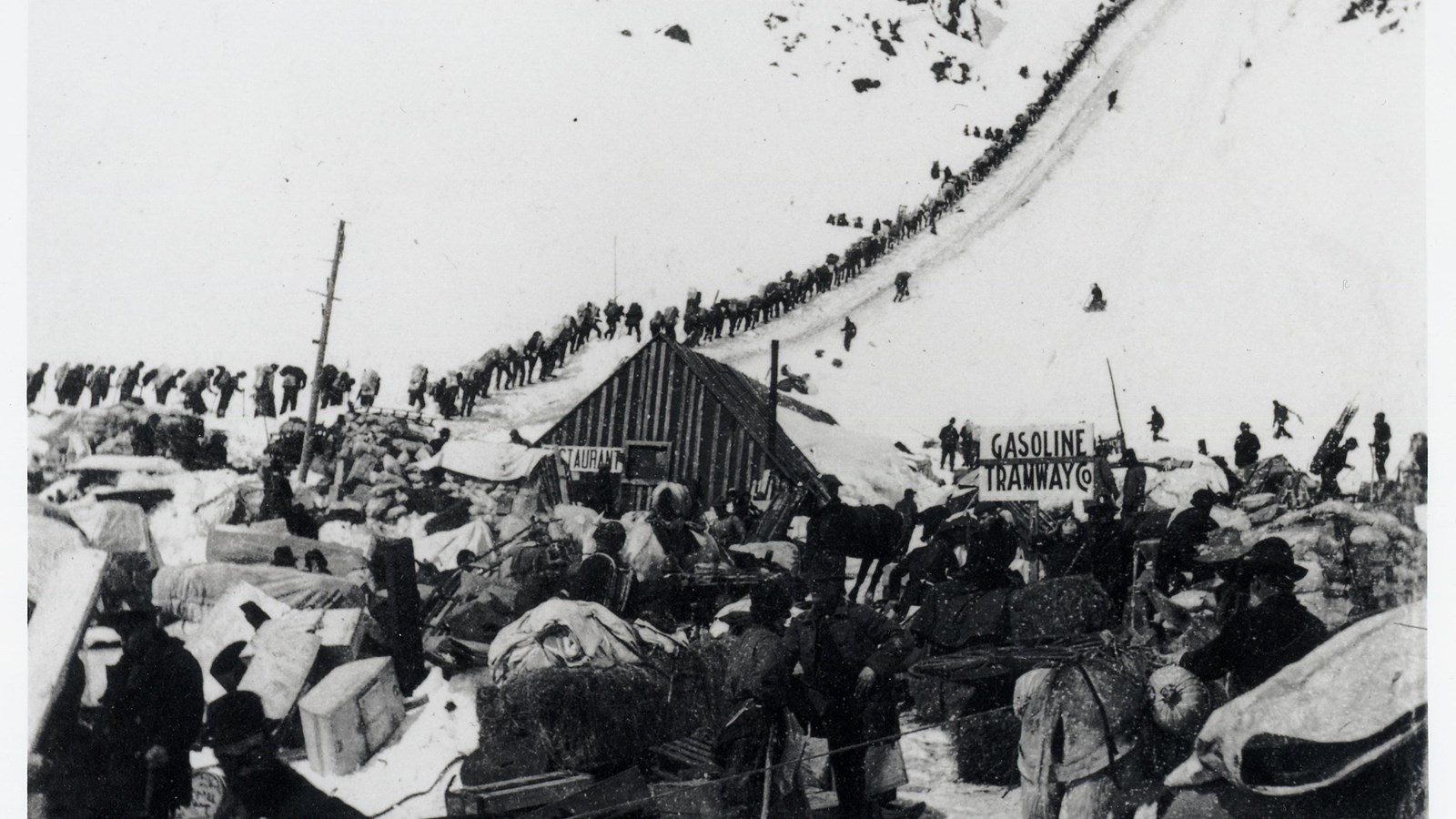Last updated: March 20, 2024
Place
Chilkoot Trail and Dyea National Historic Landmark

David Sundman, Smithsonian National Postal Museum
From 1897 to 1899, thousands of prospectors and "boomers" used the Chilkoot and White Pass Trails to reach the Klondike and Upper Yukon Valley during the Klondike gold rush. For a few brief years, Dyea became a gold rush boom town; by 1905, the majority of its buildings had been moved, burned, or torn down.
All that remains are a number of foundations surrounded by scraps of lumber and metal, 3 cemeteries, and the ruins of the wharf. Two minor settlements developed along the United States side of the Chilkoot Trail during this period as well, Canyon City and Sheep Camp. Both sites contain remnant buildings, structures, and a wide assortment of gold rush era artifacts.
Along the Chilkoot Trail remnants of the tramway systems that moved goods over the pass (known as the Scales), are gold rush era artifacts and structural ruins.
Additional Information
More National Historic Landmarks in Alaska
